Lycopus americanus
One of the more common horehounds with white tubular four-petaled flowers
Lycopus americanus American water-horehound
This native member of the mint family is a summer flower of moist or wet places like shorelines and wetlands. The small (1/8 inch) white tubular flowers appear 4-lobed and found in small clusters along the stem in the opposite leaf axils. There are two extended stamens and one pistil. The light green calyx has five sharply bristle-tipped lobes. As in most mints, the stem is square.
The upper leaves are toothed, but become more deeply toothed or lobed towards the base, with an appearance somewhat like an oak leaf. The plant grows 6-24 inches high and blooms from June to September. It is not aromatic. This species can form vegetative colonies through the growth of its rhizome. This species grows through the northeast and north central United States with scattered populations in the south and west.
This plant has been used as a source of dye and is reputed to have medicinal qualities. It is sometimes called the American bugleweed or the cut-leaved water horehound. The closely related Northern water horehound (L. uniflorus) has lower leaves toothed but not lobed and has flowers with five lobes. The latter species is often called the Northern bugleweed. There are 6-8 other Lycopus species in this area that are difficult to distinguish, but these two are the most common. Horehound flavored candy is made from a Eurasian species of mint called Marrubium vulgare.
Habitat & Range
Common on shaded hillsides, fields, moist thickets, wet ditches and swamps.
Present throughout the state.
| EMP: | OBL |
|---|---|
| NCNE: | OBL |
Phenology
Flowers June to September.
Plant Codes
S-rank: S5 (Secure)
G-rank: G5 (Secure)

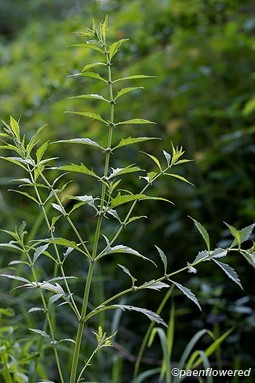
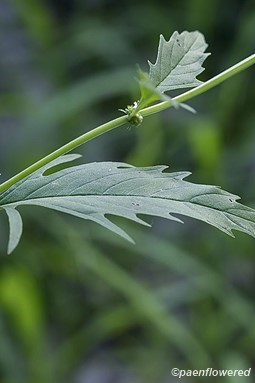
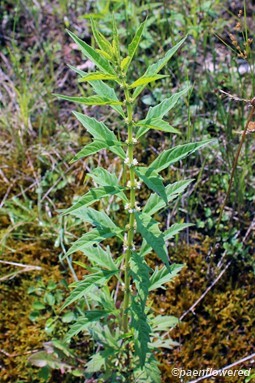
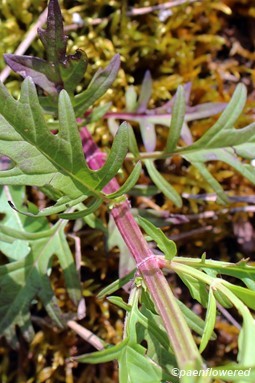

.jpg?v=638934181820000000)

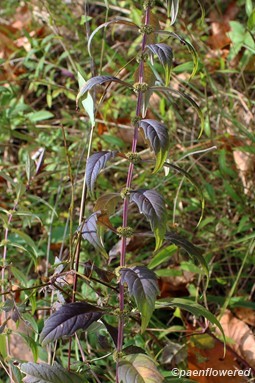




Comments
Have you spotted this plant in your area? We'd love to hear about your experience! Share your comments or questions about the plant below. Comments are moderated before posting.